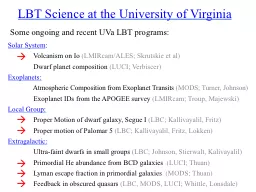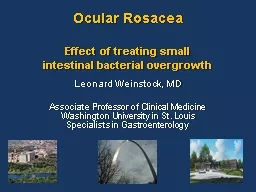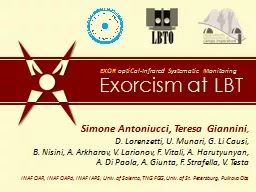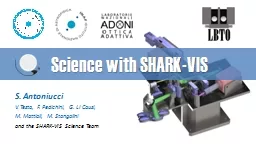PPT-LBT Science at the University of Virginia
Author : yoshiko-marsland | Published Date : 2018-03-19
Some ongoing and recent UVa LBT programs Solar System Volcanism on Io LMIRcam ALES Skrutskie et al Dwarf planet composition LUCI Verbiscer Exoplanets Atmospheric
Presentation Embed Code
Download Presentation
Download Presentation The PPT/PDF document "LBT Science at the University of Virgini..." is the property of its rightful owner. Permission is granted to download and print the materials on this website for personal, non-commercial use only, and to display it on your personal computer provided you do not modify the materials and that you retain all copyright notices contained in the materials. By downloading content from our website, you accept the terms of this agreement.
LBT Science at the University of Virginia: Transcript
Download Rules Of Document
"LBT Science at the University of Virginia"The content belongs to its owner. You may download and print it for personal use, without modification, and keep all copyright notices. By downloading, you agree to these terms.
Related Documents














